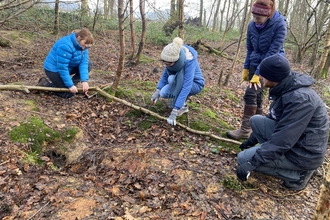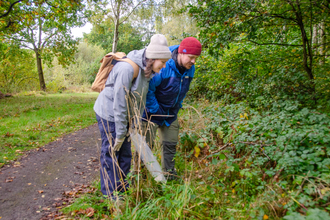Woodlands for the future
A critical race against time
From the topmost branch to the deepest root, woodlands form the backbone of Yorkshire’s natural heritage. And yet, we are facing the slow collapse of our most beloved wild spaces. Research suggests that our woodlands are on the brink of ecological collapse, and in as little as 50 years, these diverse and magical spaces could fall silent.
Will you help us this autumn to restore our woodlands for the future?
We are living through the quiet unravelling of our wildest places. But we can still choose a different future—one where woods whisper with birdsong, rustle with mammals, and teem with life.
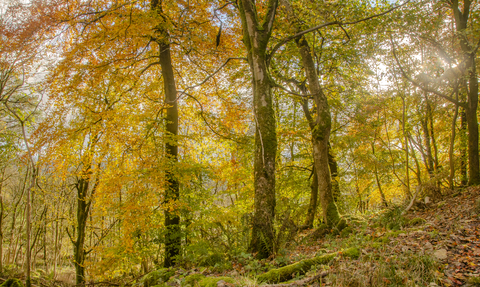
Autumnul Grass Wood (c) Sara
Give Yorkshire's woodlands a future
Seeing the wood for its trees
Caring for our woodlands is no mean feat, and we make sure to manage and look after each woodland individually to make sure that we can create the best habitats possible for Yorkshire’s wildlife and plant life.
From planting saplings, coppicing, pollarding, removing invasive species, and creating woodland glades, there is a huge kaleidoscope of work required to sustain healthy woodland ecosystems.
Discover more on woodland management
With your help we can nurture our existing woodlands and create new wilder woodlands for the future.
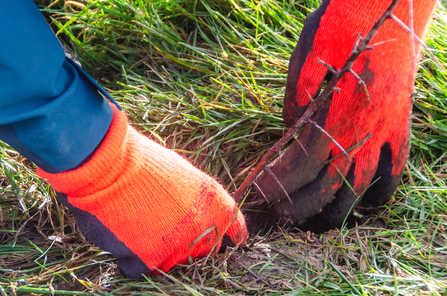
Tree planting, Wild Ingleborough Volunteer Task Day - Telling our Story Volunteer Sara
From tiny acorns…
Many of the tree species in our woodlands support a huge number of different birds, insects and mammals. Ash trees alone support 44 species which cannot live in any other tree, and a staggering 326 species rely solely on oak for their survival.
With mounting pressures from disease and invasive species, it’s crucial that we are able to keep a healthy stock of tree saplings to be able to replace diseased and damaged trees across our reserves. Your support could help us to create a stock of native saplings to plant out in our woodlands to bolster biodiversity and to create woodlands for the future.
£25 could buy 20 tree saplings grow on in a woodland nursery for future planting
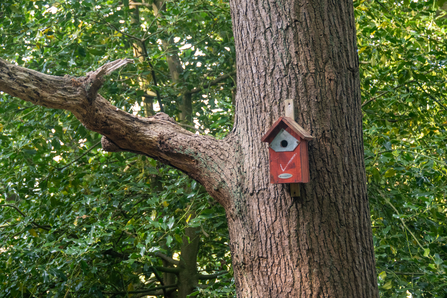
Volunteers mark the nest boxes with a chalk tick to keep track of the ones they have cleaned - Photo Credit, Sara Spillett
A home for the winter
Some birds are very picky nesters! As our woodlands become more scarce, the amount of habitat with very specific conditions that make it perfect for species with specialist needs like pied flycatchers, willow tits and redstarts is also running out.
These birds are often in direct competition for resources with more common and adaptable species, and so are in danger of becoming very rare. Your support could help us to ensure that these birds have ample opportunity and space to create a home ahead of the winter and to increase their chances of survival in the cold months.
£50 could help us to install three nestboxes for birds such as pied flycatchers and redstarts.
(C) Jim Horsfall
Hedging our bets
They may not immediately spring to mind when we consider woodlands, but hedgerows play an incredibly important role in the survival of these habitats. Many hedges date back to the Middle Ages, but it is sadly estimated that since the 1950s around 120,000 miles of hedgerows have been lost in the UK due to rises in agricultural and industrial development.
Core hedgerow trees such as hawthorn, field maple and blackthorn provide not only food and shelter, but also a means of safe passage for woodland species from habitat to habitat. Your support to help us repair and reinstate hedgerows around our reserves means we can better connect woodlands together and give our wildlife a larger safe haven.
£150 could help to plant 5 metres of new hedgerow to better connect our woodlands together.
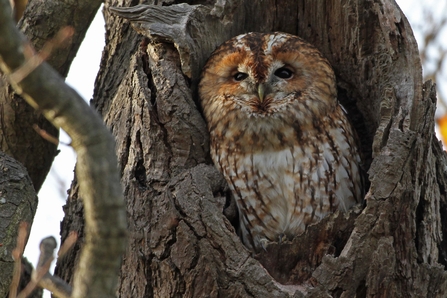
Tawny owl ©Margaret Holland
Ancient Veterans
Although you might not think it, deadwood is actually a hugely important habitat in woodlands. We need very old and rotting wood for insects and fungi to thrive on - in turn providing food and nesting space for birds like woodpeckers, owls and bats.
Sometimes our woodlands don't have enough deadwood, and veteranising is the process of creating more by creating holes, breaking branches or stripping bark from a younger tree. Without this sort of habitat, biodiversity in our woodlands would collapse quickly.
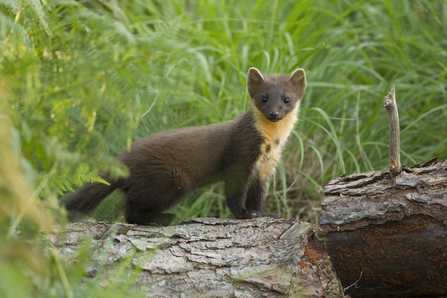
Pine marten © Mark Hamblin / 2020VISION
Could pine martens thrive once again in Yorkshire?
The decline of our woodlands over time has put increased pressure on pine martens, leading to their virtual disappearance. Pine martens rely on diversity in their woodland habitats, with a mixture of young and mature trees playing vital roles in providing food and shelter: it is even estimated that an adult male alone can require as much as 3,000 hectares of woodland for its home range.
Building evidence to inform our work is the gift that keeps on giving for a wilder future. Research takes time and money but has shown that specialist species, such as pine martens, could play a starring role in our woodland habitats – helping to restore the balance in creating healthier ecosystems.
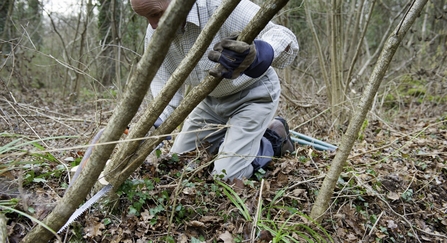
Coppicing hazel - Paul Harris/2020VISION
From the ground up
Maintaining our woodlands often involves a programme of highly-skilled tasks and specialised tools. From tackling the spread of invasive species such as Himalayan balsam and giant hogweed, to traditional woodland management techniques like coppicing and pollarding, our reserve teams work tirelessly to promote biodiversity across our woodland reserves.
The hands-on and unpredictable nature of woodland management means that our activities take a huge amount of resources and time, particularly as our intention is to generate as little disruption to our woodland ecosystems as possible.
Time is running out for our most beloved spaces and species
Take pride in your Yorkshire roots
With your help, we can reinvigorate our existing woodlands and create new and flourishing woodlands for the future.
Discover the wealth our woodlands have to offer through events, volunteering and more!

